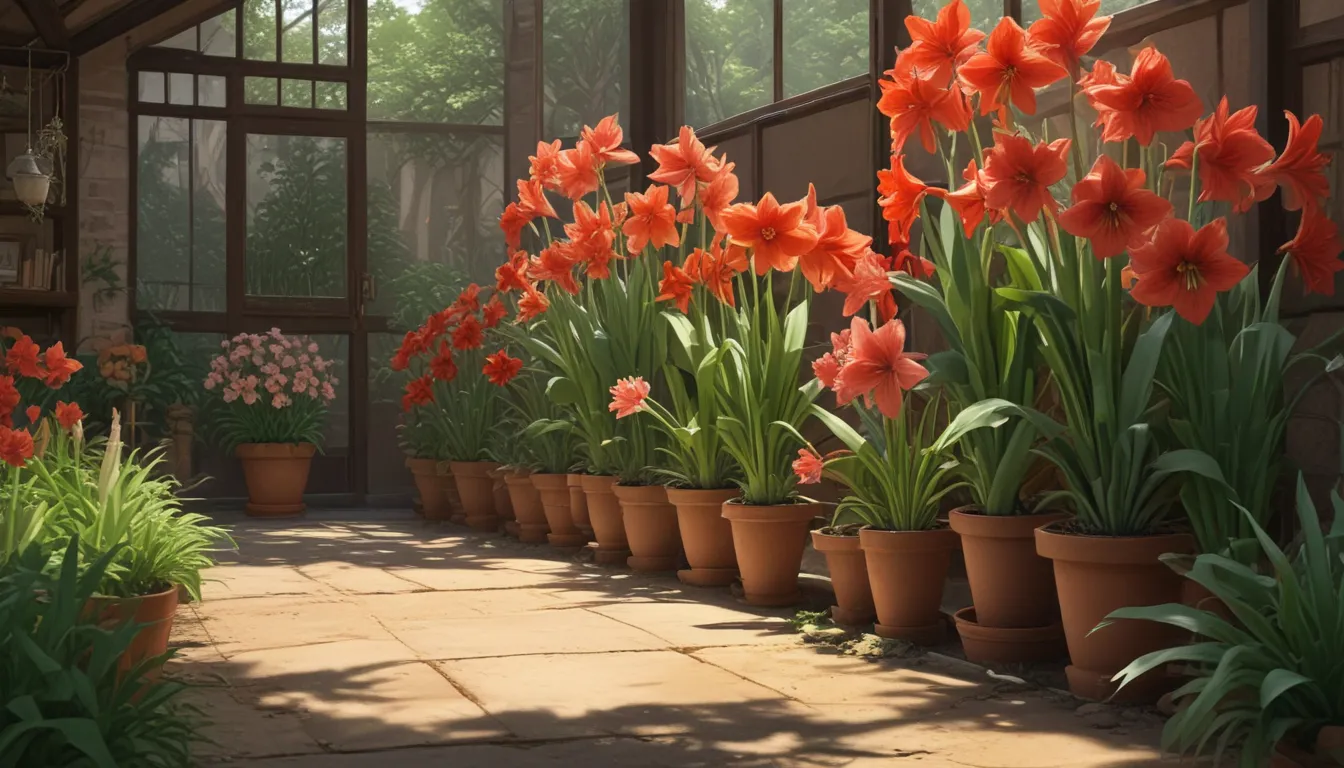Complete Guide to Amaryllis Care After Flowering

Amaryllis are stunning tropical perennials belonging to the Hippeastrum genus, often forced to bloom indoors during the winter holiday season. These vibrant ornamentals can thrive for many years with the proper care after flowering. In this comprehensive guide, we will cover all the essential steps to ensure your amaryllis bulbs continue to bloom beautifully year after year.
What You’ll Learn
- Understanding Green Plant Treatment
- Caring for Potted Amaryllis Outdoors
- Forcing Amaryllis into Dormancy
- Transplanting Amaryllis into the Garden
Green Plant Treatment
After your amaryllis has finished flowering, it is important to treat them like any other growing plant to ensure they bloom again in future seasons. Here are the key steps to follow:
- Deadhead spent flowers by cutting the stems a few inches above the bulb neck.
- Do not remove the foliage, as it is needed for the bulb to recharge food reserves.
- Keep the bulbs in a brightly lit location, water regularly, and allow the soil to dry between waterings.
- Fertilize with a bulb-booster formula with a lower ratio of nitrogen to promote blooming.
As spring approaches, you can move your plants outdoors to enjoy the warm temperatures and sunshine. Alternatively, keep them indoors in a well-lit area. Regular watering and fertilization are essential during this period to ensure healthy growth.
Potted Outdoor Care
When all danger of frost has passed, and temperatures remain above 50°F overnight, you can move your potted amaryllis outdoors. Here’s how to care for them:
- Harden off the plants by gradually introducing them to outdoor conditions.
- Place the containers in a spot with morning sun and afternoon shade.
- Keep the soil lightly moist and apply a slow-release fertilizer in late spring.
- Avoid overwatering and provide some afternoon shade in hotter regions.
Leave the containers outdoors until it’s time to force the bulbs into dormancy in late summer to prepare for another season of flowering.
Force into Dormancy
To encourage your amaryllis bulbs to bloom indoors again, you need to force them into dormancy. Follow these steps in late summer:
- Bring potted plants back indoors and withhold water and fertilizer.
- Trim foliage as it wilts and browns, then move the plants to a cool, dark location.
- After several weeks, remove the bulbs from the soil, clean them, and chill for at least eight weeks.
- Pot the bulbs in fresh, well-draining soil and place them in a bright, sunny location.
- Water thoroughly and wait for new growth to emerge before resuming regular care routines.
By allowing your bulbs to rest and undergo dormancy, you can ensure they produce spectacular winter blooms year after year.
Transplant into the Garden
If you live in USDA Hardiness Zones 9 to 11, you have the option to transplant your amaryllis bulbs into the garden for spring blooms. Here’s how to do it:
- Choose a well-draining site with full to part sun and slightly acidic soil.
- Mix bone meal into the soil before planting the bulbs up to their necks.
- Water thoroughly after planting and feed with a slow-release fertilizer throughout spring and summer.
Transplanting your amaryllis into the garden allows them to bloom naturally in their intended habitat, adding a pop of color to your outdoor space each spring.
Conclusion
With a little bit of care and attention, your amaryllis bulbs can continue to bloom beautifully for years to come. Whether you prefer to keep them indoors or transplant them outdoors, following the guidelines outlined in this guide will ensure your plants thrive and produce stunning flowers season after season. Do you have any tips for caring for amaryllis bulbs? Share them in the comments below and happy gardening!





